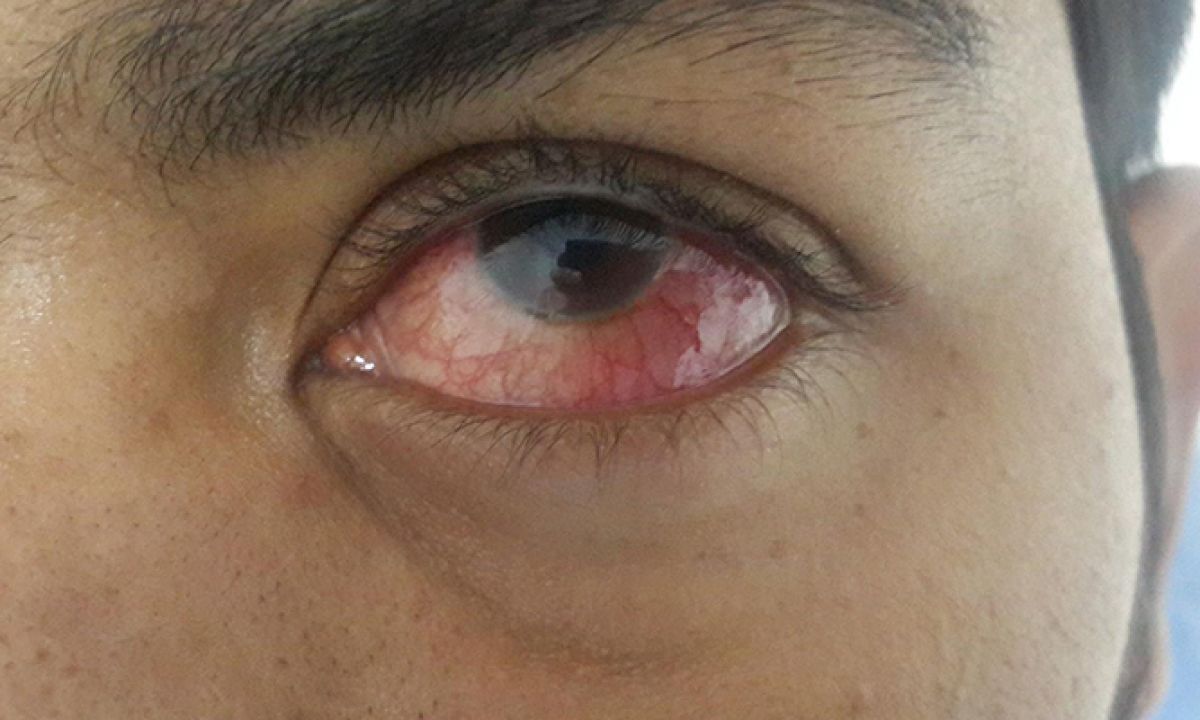
Tuberculous uveitis is a rare but serious eye condition caused by the bacteria Mycobacterium tuberculosis. This infection can lead to inflammation in various parts of the eye, potentially causing vision problems or even blindness if left untreated. Understanding the facts about this condition is crucial for early detection and effective management. Did you know that tuberculous uveitis can mimic other eye diseases, making diagnosis tricky? It's often associated with systemic tuberculosis, which primarily affects the lungs but can spread to other organs, including the eyes. Treatment usually involves a combination of antibiotics and anti-inflammatory medications. Early intervention can significantly improve outcomes, so awareness is key. Let's dive into 30 essential facts about tuberculous uveitis to help you stay informed and vigilant.
Key Takeaways:
- Tuberculous uveitis is a rare eye condition caused by tuberculosis bacteria, leading to symptoms like eye pain and blurred vision. Early detection and treatment are crucial to prevent vision complications.
- Preventing tuberculous uveitis involves vaccination, early tuberculosis treatment, and maintaining a healthy immune system. Avoiding close contact with active tuberculosis cases and regular screening are also important preventive measures.
What is Tuberculous Uveitis?
Tuberculous uveitis is an eye condition caused by the bacteria Mycobacterium tuberculosis. It affects the uvea, the middle layer of the eye, leading to inflammation. Here are some intriguing facts about this condition:
- Tuberculous uveitis is a rare form of uveitis, accounting for about 1-2% of all uveitis cases.
- The condition can affect any part of the uvea, including the iris, ciliary body, and choroid.
- Symptoms often include eye pain, redness, blurred vision, and sensitivity to light.
- Tuberculous uveitis can occur in one or both eyes.
- The condition is more common in regions where tuberculosis is prevalent, such as Asia and Africa.
Causes and Risk Factors
Understanding what causes tuberculous uveitis and who is at risk can help in early detection and treatment.
- Tuberculous uveitis is caused by the spread of Mycobacterium tuberculosis from the lungs to the eye.
- People with a weakened immune system, such as those with HIV/AIDS, are at higher risk.
- Close contact with someone who has active tuberculosis increases the risk.
- Living in or traveling to areas with high tuberculosis rates can also be a risk factor.
- Smoking and poor living conditions can contribute to the development of tuberculosis, and consequently, tuberculous uveitis.
Diagnosis
Diagnosing tuberculous uveitis involves several tests and procedures to confirm the presence of Mycobacterium tuberculosis.
- A thorough eye examination by an ophthalmologist is the first step in diagnosing tuberculous uveitis.
- Blood tests, such as the tuberculin skin test (TST) or interferon-gamma release assays (IGRAs), help detect tuberculosis infection.
- Chest X-rays can reveal signs of tuberculosis in the lungs.
- Polymerase chain reaction (PCR) tests can detect Mycobacterium tuberculosis DNA in eye fluid samples.
- Biopsy of eye tissue may be necessary in some cases to confirm the diagnosis.
Treatment Options
Treating tuberculous uveitis involves addressing both the eye inflammation and the underlying tuberculosis infection.
- Anti-tuberculosis medications, such as isoniazid, rifampin, pyrazinamide, and ethambutol, are the primary treatment.
- Corticosteroids may be prescribed to reduce eye inflammation.
- Treatment usually lasts for at least six months to ensure the infection is fully eradicated.
- Regular follow-up appointments are crucial to monitor the response to treatment and adjust medications if necessary.
- In severe cases, surgery may be required to manage complications like cataracts or glaucoma.
Complications
If left untreated, tuberculous uveitis can lead to several serious complications that can affect vision.
- Chronic inflammation can cause scarring of the uvea, leading to vision loss.
- Glaucoma, a condition characterized by increased pressure in the eye, can develop as a result of tuberculous uveitis.
- Cataracts, or clouding of the eye's lens, can form due to prolonged inflammation or steroid use.
- Retinal detachment, where the retina separates from the back of the eye, is a potential complication.
- Macular edema, or swelling of the central part of the retina, can occur, affecting central vision.
Prevention
Preventing tuberculous uveitis involves measures to reduce the risk of tuberculosis infection.
- Vaccination with the Bacillus Calmette-Guérin (BCG) vaccine can help protect against tuberculosis.
- Early detection and treatment of tuberculosis can prevent its spread to the eyes.
- Maintaining a healthy immune system through proper nutrition and regular exercise can reduce the risk.
- Avoiding close contact with individuals who have active tuberculosis is crucial.
- Regular screening for tuberculosis in high-risk populations can aid in early intervention and prevention of complications like tuberculous uveitis.
Final Thoughts on Tuberculous Uveitis
Tuberculous uveitis, a rare but serious eye condition, demands attention. Understanding its symptoms, causes, and treatments can make a big difference in managing it. Early detection is key. Symptoms like eye pain, redness, and blurred vision shouldn't be ignored. If you suspect something's off, see an eye specialist. They can run tests to confirm if tuberculosis is the culprit.
Treatment usually involves a mix of antibiotics and anti-inflammatory drugs. Following the prescribed regimen is crucial to prevent complications. Regular check-ups help monitor progress and catch any issues early.
Staying informed about tuberculous uveitis empowers you to take control of your eye health. Share this knowledge with friends and family. Awareness can lead to early diagnosis and better outcomes. Keep an eye on your vision, and don't hesitate to seek medical advice if needed.
Frequently Asked Questions
Was this page helpful?
Our commitment to delivering trustworthy and engaging content is at the heart of what we do. Each fact on our site is contributed by real users like you, bringing a wealth of diverse insights and information. To ensure the highest standards of accuracy and reliability, our dedicated editors meticulously review each submission. This process guarantees that the facts we share are not only fascinating but also credible. Trust in our commitment to quality and authenticity as you explore and learn with us.
